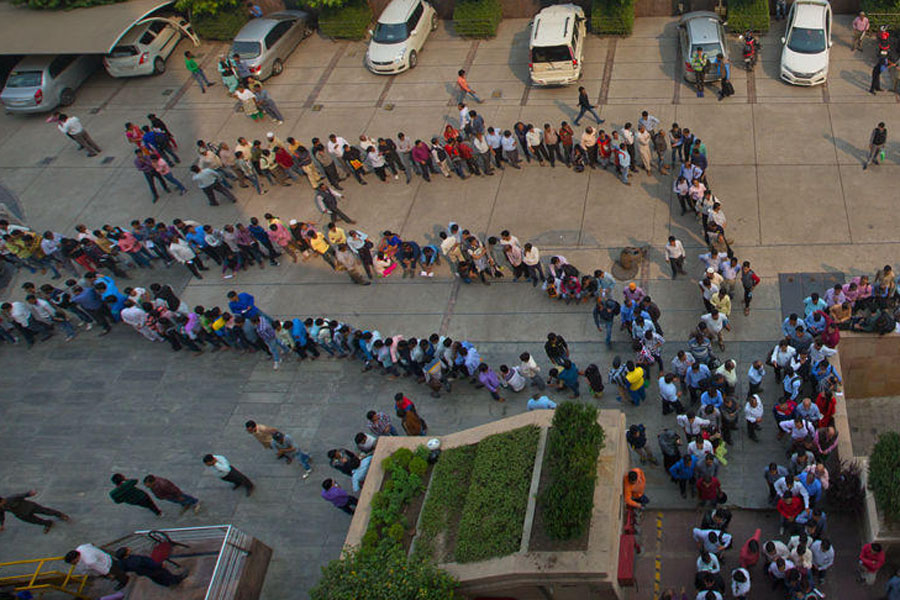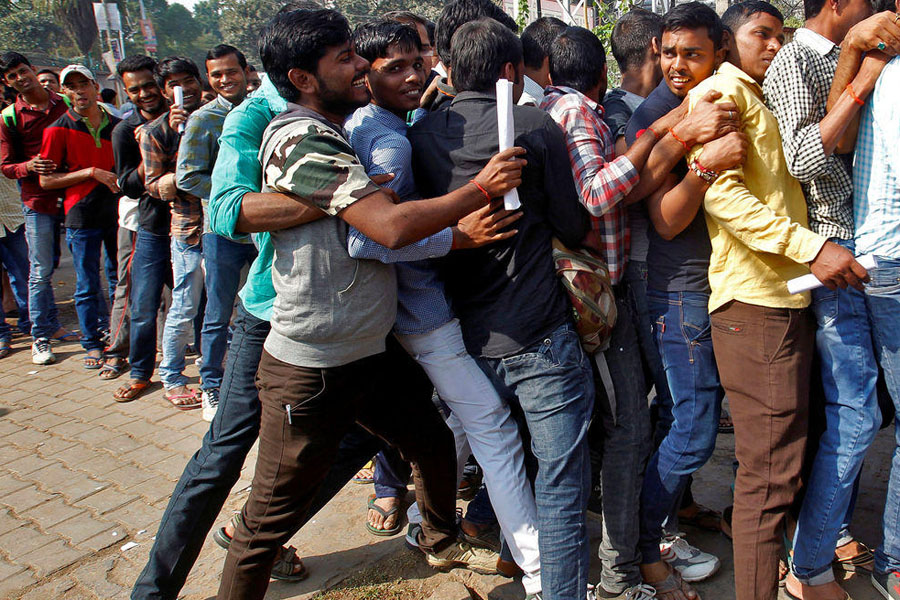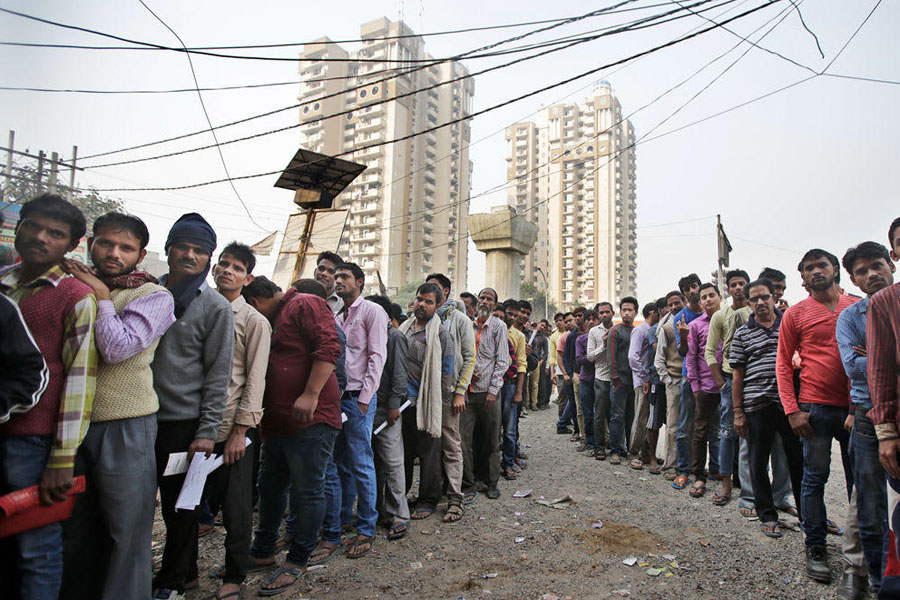Modi’s Crusade against ‘Black Money’

In India, black money is not just an economic problem, but a major political issue. So far, only the Modi administration has shown the determination to battle money laundering in the country. However, it is still early to tell whether his move will leave any lasting effect.
The target of the move is money earned from smuggling, drug trafficking, corruption and other illegal activities—income for which taxes are not usually paid. The sting also targets legitimately earned money that was not reported to the government.

Citizens queue outside a bank in New Delhi.
Generally, the sheer scale of money earned by corrupt officials has outraged the public. In 2012, the Indian government published a white paper on black money, claiming that money earned illegally accounts for a fifth of India's economy. Some reports claimed a massive outgoing flow of black money, of which over hundreds of billions U.S. dollars are being illegally held in Switzerland alone, far exceeding the respective numbers from Russia.

Men try to jump a queue outside a bank in Allahabad.
Before Modi’s government came into power, the largest opposition party in the Parliament, the Bharatiya Janata Party (BJP), often lashed out the Congress Party-led coalition government for its failure in fighting corruption. In 2014, right after Modi led the BJP to an election win, he organized an investigative team to eliminate black money and passed new regulations on the declarations of income and assets held by Indian citizens abroad. In June 2016, he delivered an ultimatum demanding that property tax evaders confess and pay a fine before midnight on October 1 or face a possible prison sentence.
Immediately after the speech, the government issued a total of 700,000 notices to individuals suspected of tax evasion. On November 7, the government unveiled an unexpectedly bold strategy by demonetizing 500 and 1,000 Rupee notes on November 8. The old versions of these two bills accounted for 86 percent of the money in circulation in India.
Cash transactions still make up the bulk of India’s sales, accounting for 78 percent of all transactions in 2015. In countries like the United States and the United Kingdom, cash transactions only take up less than 25 percent of the total. On November 8, the entire Indian market was shocked by the sudden currency change. The news caused massive queues at ATMs and banks. The retail industry instantly dipped into recession.

The government explained that the move was meant to curb various terrorist and subversive activities—which are often funded by large-denomination notes. Officials also hope to eliminate the shadow economy, which not only hurts government revenue, but also impedes the implementation of national macroeconomic policies.
The government is placing considerable hope in the demonetization of the old banknotes: It is expected that many participants in the underground economy had to expose themselves in the light when attempting to explain to the bank or government the origins of the large amounts of cash they hold.
Predicting the effects of this unprecedented measure would be extremely difficult. Past experience has shown that the black market is closely tied to changes in economic structure and tax systems as well as public awareness. Terrorism and corruption also have deep roots in political, economic and social institutions.
It would be impossible to eliminate the black market completely via a simple currency replacement campaign. In response to turmoil caused by the currency replacement, Modi firmly stated that “history has taught us that citizens are always willing to make sacrifice for the good of the country.” Hopefully, this sacrifice is not in vain.
